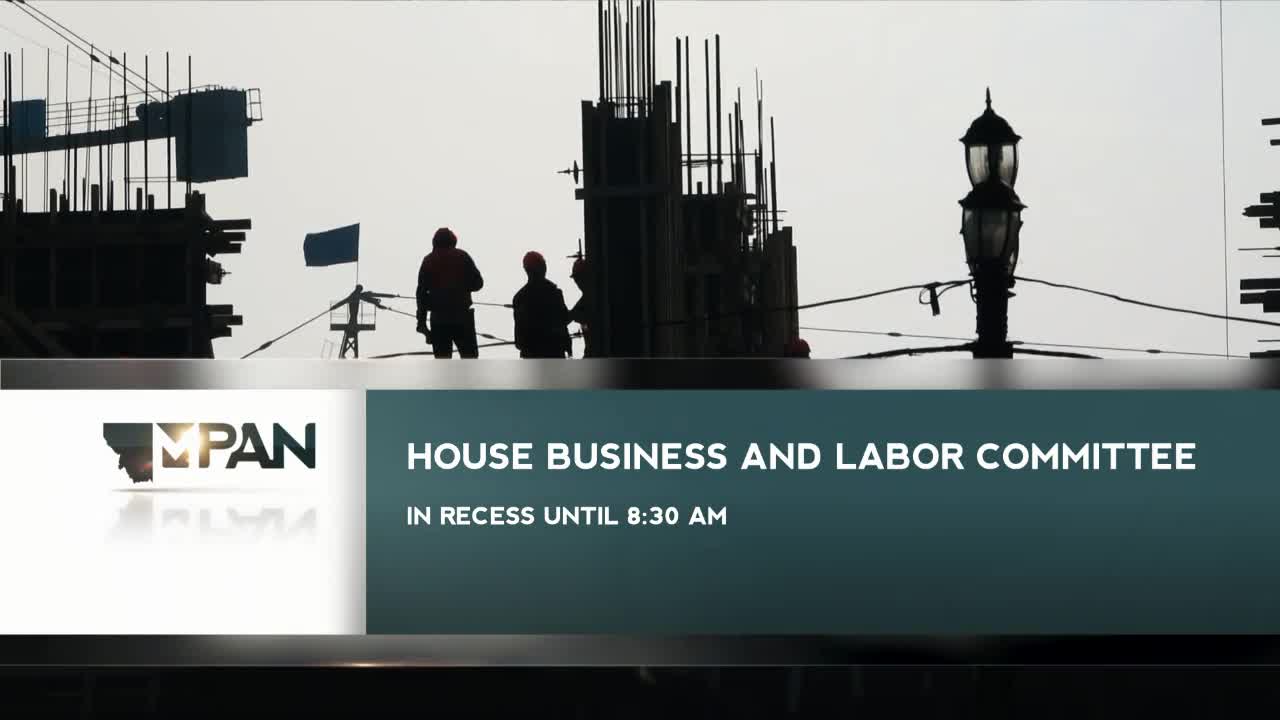Labor chief Sarah Swanson previews workforce, unemployment and licensing initiatives; outlines response to Stillwater layoffs
January 08, 2025 | 2025 Legislature MT, Montana
This article was created by AI summarizing key points discussed. AI makes mistakes, so for full details and context, please refer to the video of the full meeting. Please report any errors so we can fix them. Report an error »

Commissioner Sarah Swanson told the House Business and Labor Committee that the Department of Labor and Industry will focus its 2025 effort on growing Montana's labor force, improving service delivery and increasing operational efficiency.
"At its core, the Montana Department of Labor and Industry is an education and training agency mission focused on empowering all Montanans through work and opportunity," Swanson said, describing the agency's responsibility for workforce development, unemployment insurance and occupational licensing.
Swanson outlined several proposals and accomplishments: the agency is authorized for about 747 FTE, deploys roughly $160 million per biennium, and has modernized core IT systems including a new unemployment platform (MUSE), an employer/job platform (Employ Montana), and a cloud migration of occupational licensing software (Accela). She said the department plans to reduce reliance on general fund spending, proposing to revert $3.6 million to the general fund and to reallocate internal special-revenue funds to finance initiatives like job-service kiosks.
On unemployment insurance, Swanson said independent actuarial review found the unemployment trust is healthy and that the agency will propose adding an additional lower tax tier so the existing 11-tier index can trigger a reduced employer rate during strong economic times while preserving the formula that raises rates during downturns.
Responding to the Stillwater Mine layoffs, Swanson said the agency ran a multi-day rapid-response operation in Columbus, surveyed workers and secured $3.5 million in dislocated-worker funds (the department had requested $12 million) to provide retraining, relocation assistance and cohort training in partnership with two-year and tribal colleges. Swanson said about 170 laid-off workers had been offered recall at the mine and that roughly 560 workers lost employment in the initial layoff.
Swanson previewed 12 separate bill concepts to address occupational-licensing capacity that originated from work on last session's House Bill 152. She said the department will seek to preserve boards' independent authority while improving internal processing and technology to handle a rapidly growing licensed population (the department administers over 170,000 licenses).
The commissioner also described workforce programming: WIOA federal funds (about $6.2 million annually), registered apprenticeship (about 13,700 apprentices historically), incumbent-worker training grants and youth programs. She said the State Workforce Innovation Board (SWIB), relocated to the commissioner's office, will drive strategic coordination and noted SWIB's role responding to the Stillwater layoff and supporting industry-aligned training.
Swanson invited lawmakers to view county-level labor reports, apprenticeship data and other publications the department will provide during the session and offered staff to help sponsors craft bills that avoid unnecessary rulemaking.
She closed by offering the department's staff as resources for committee members and by inviting them to an agency showcase in the Capitol rotunda.
"At its core, the Montana Department of Labor and Industry is an education and training agency mission focused on empowering all Montanans through work and opportunity," Swanson said, describing the agency's responsibility for workforce development, unemployment insurance and occupational licensing.
Swanson outlined several proposals and accomplishments: the agency is authorized for about 747 FTE, deploys roughly $160 million per biennium, and has modernized core IT systems including a new unemployment platform (MUSE), an employer/job platform (Employ Montana), and a cloud migration of occupational licensing software (Accela). She said the department plans to reduce reliance on general fund spending, proposing to revert $3.6 million to the general fund and to reallocate internal special-revenue funds to finance initiatives like job-service kiosks.
On unemployment insurance, Swanson said independent actuarial review found the unemployment trust is healthy and that the agency will propose adding an additional lower tax tier so the existing 11-tier index can trigger a reduced employer rate during strong economic times while preserving the formula that raises rates during downturns.
Responding to the Stillwater Mine layoffs, Swanson said the agency ran a multi-day rapid-response operation in Columbus, surveyed workers and secured $3.5 million in dislocated-worker funds (the department had requested $12 million) to provide retraining, relocation assistance and cohort training in partnership with two-year and tribal colleges. Swanson said about 170 laid-off workers had been offered recall at the mine and that roughly 560 workers lost employment in the initial layoff.
Swanson previewed 12 separate bill concepts to address occupational-licensing capacity that originated from work on last session's House Bill 152. She said the department will seek to preserve boards' independent authority while improving internal processing and technology to handle a rapidly growing licensed population (the department administers over 170,000 licenses).
The commissioner also described workforce programming: WIOA federal funds (about $6.2 million annually), registered apprenticeship (about 13,700 apprentices historically), incumbent-worker training grants and youth programs. She said the State Workforce Innovation Board (SWIB), relocated to the commissioner's office, will drive strategic coordination and noted SWIB's role responding to the Stillwater layoff and supporting industry-aligned training.
Swanson invited lawmakers to view county-level labor reports, apprenticeship data and other publications the department will provide during the session and offered staff to help sponsors craft bills that avoid unnecessary rulemaking.
She closed by offering the department's staff as resources for committee members and by inviting them to an agency showcase in the Capitol rotunda.
View full meeting
This article is based on a recent meeting—watch the full video and explore the complete transcript for deeper insights into the discussion.
View full meeting
